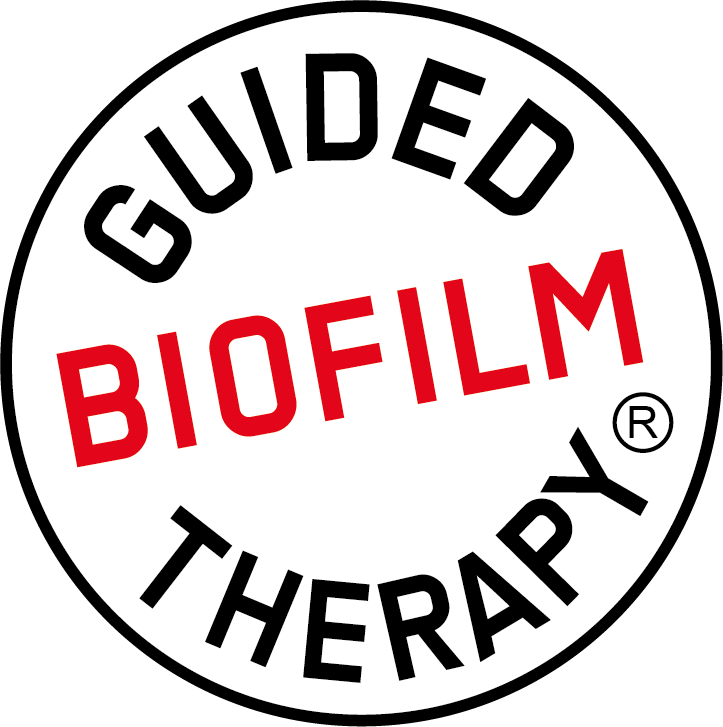

The bacterial contamination of the room air during an AIRFLOW® treatment
Marcel Donnet, Magda Mensi, Klaus-Dieter Bastendorf, Adrian Lussi
Dentists and scientists, supported by EMS, have measured bacterial contamination of indoor air during an AIRFLOW® treatment in two scenarios (without and with special protective equipment). Although the results of this investigation cannot be transferred analogously to a possible viral load (e.g. SARS-CoV-2) in the aerosol, the data show an impressive reduction of the bacterial contamination of the room air if the AIRFLOW® treatment is carried out with appropriate protective measures.
Patients, dental staff and dentists are exposed to bacteria and virusses, which can lead to infectious diseases, especially of the oral cavity and the respiratory tract. Anyone who has chosen a profession in dentistry was aware that dental treatment always involves the risk of infection. In dentistry, the short distance to the patient's oral cavity means a basic exposure to the patient's saliva, blood aerosols and sulcus fluid [Peng et al., 2020]. The main transmission pathway of bacteria and virusses is saliva droplets [Yang et al., 2020; Szymanska et al., 2005]. For these reasons, very strict hygiene roles have always been applied in dentistry. In recent decades, dentists have dominated the risk of influenza, tuberculosis, hepatitis and AIDS. Today, the rsk of SARS-CoV-2 must also be successfully managed.
Nearly all dental instruments used in common dental treatments generate aerosols: Low and/or high speed handpieces, turbines, sonic and ultrasonic devices, air-water spraying and power-water jet devices [Graetz et al., 2014]. Aerosols differ from droplets and spray mist. Due to their smaller practicle size (<50 µm), aerosols can be carried several metres away and can be detected for longer periods of time in the ambient air [Drisko et al., 2000].
In dentistry, aerosols can occur as solid particles, powder dust (non-contaminated), splashes that settle quickly (contaminated), device aerosol (non-contaminated), treatment aerosol (contaminated). The risk of contamination depends on the type of treatment, the degree of patient infection and preventive hygiene measures to minimize the transmission of contaminated aerosols. To date, there is a lack of scientific evidence that shows the risk of aerosols and the danger they pose to clinicians and patients [RKI., 2020]. One reason for this is the difficulty in effectively measuring the level of contamination with bacteria and viruses transported in aerosols.
According to our research, there is no scientific literature on the viral and bacterial contamination of aerosols during professional tooth cleaning with AIRFLOW®. Therefore, we carried out an application observation in practice to better understand the risk of aerosol contamination by using the AIRFLOW® technology.
Objective
The aim of the observational study was to measure the bacterial load of the room air during an AIRFLOW® treatment in order to obtain information for the assessment of the risk of aerosol contamination for practitioners, practice team and patients during the use of the AIRFLOW® technology in different situations.
Materials and Methods
The AIRFLOW treatments were performed in the prophylaxis rooms of the company (Nyon, Switzerland) by a dentist (Dr. Neha Dixit, EMS). The measuring procedure and the general conditions for the execution of the prophylaxis had previously been designed by the authors.
A total of 20 adult patients aged between 30 and 45 years were treated. The plaque index Quigley-Hein modified according to [Turesky et al., 1970] was 0.80. The prophylaxis sessions took place on four consecutive days with five patients each. Between treatments, the rooms were thoroughly ventilated to remove remaining aerosols and to restore a neutral situation for the next session.
The aerosol was measured for exactly ten minutes at each AIRFLOW® treatment. A cyclone system (PRELECT, Medentex, GmbH, Bielefeld, Germany) pre-filled with filtered water and placed 20cm from the patient's mouth was used to collect the aerosols. With a Cattani high performance vaccuum system 900Vmin (cattani Micro Smart, Parma, Italy) 9m3 of the air-aerosol mixture was suctioned during the ten-minute treatment. Immediately after the treatment, bacterial contamination of the aerosol was measured using an adenosine triphosphate (ATP) system. This method allows to determine the amount of all living bacteria [Watanabe et al., 2019].
Three measurement groups were defined for the study:
- Group 1 (control): Room air measurement without treatment, measurement of the bacterial load of 9m3 air in the treatment room before each patient treatment (20 measurements).
- Group 2: Room air measurement during an AIRFLOW® treatment with saliva ejector, without mouth rinse, without high vaccuum suction (10 patients)
- Group 3: Room air measurement during an AIRFLOW® treatment with saliva ejector, with mouth rinse, with high vaccuum suction (10 patients)
According to the protocol for the 'Guided Biofilm Therapy (GBT), patients were asked to rinse with chlorhexidine (BacterX, EMS, Nyon, Switzerland) for 60 seconds before starting treatment (group 3 only). After taking the patient's medical history and collecting the necessary diagnostic data, all patients were treated with eye protection, saliva ejector (Kaladent. St. Gallen, Switzerland). Optragate (Ivoclar Vivadent, Schaan, Lichtenstein), additionally in group 3 with Purevac® high-vaccuum suction (Dentsply Sirona, York, Pennsylvania, U.S.A.). The biofilm was stained (Biofilm Discloser, EMS) and made visible. It was removed with the AIRFLOW® PROPHYLAXIS MASTER (AFPM) and the AIRFLOW® handpiece with erythritol-based PLUS powder (14 µm). The AFPM unit was used with the recommended powder (level 3) and maximum water setting for biofilm removal.
Results and Discussion
With the presented method we were able to measure reproducibly the bacterial contamination pf aerosols generated during an AIRFLOW® treatment. The room air measurement during AIRFLOW® treatments with saliva ejector , mouth rinse and high vaccuum extraction (group 3) showed the same level of bacterial contamination as was found for the group (p > 0.05). With the use of mouthwash and high vacuum aspiration, the AIRFLOW® treatment did not lead to a higher level of bacterial aerosol contamination in the room air.
The contribution of the mouthwash or high vacuum suction to this result was not determined.
It was not the aim of the investigation to collect and measure larger droplets. These remain in the treatment environment and are not part of the aerosol. The risk of infection with thes droplets is the smear and not the aerosol infection. The smear infection has been known for a long time and is controlled by the dental team through the protective measures [Watanable et al., 2019].
It is imperative to strictly follow the RKI guidelines and recommendations for personal protective equipment, for surface disinfection as well as for the correct technology and proper use of the equipment.
Conclusion
The AIRFLOW® treatment with the use of Optragate, a suitable mouth rinse and high vacuum suction does not lead to an increased risk of bacterial contamination for the practice team and patients. In addition, it could be shown that aerosols can be effectively controlled with the "two-hand suction technique" using a high vacuum suction in the immediate vicinity of the treatment area.
Note from the authors: Further current, as yet unpublished investigations of the group of authors, which were carried out under the same process protocol with the piezoceramic scaler PIEZON PS, show that even this technology does not pose an increased risk of bacterial contamination for dental personnel and patients when using the protective measures. Here, too, rinsing with BacterX was carried out prior to treatment and the high vacuum suction and two-hand technique was used. The final report will be published as soon as the tests are completed.
DR. Marcel Donnet
EMS Electro Medical Systems
Chemin de la Vuarpilliere 31,
1260 Nyon, Switzerland
PROF DR. Magda Mensi
University of Brescia,
Odontostomatology Service
5123 Brescia, Italy
DR. Klaus-Dieter Bastendorf
Practice Dr. Strafela-Bastendorf
Gairenstr 6, 73054 Eislingen
PROF DR Adrian Lussi
University Hospital Freiburg
Department of Dental Conservation and Periodontology
Hugstetter Str. 55, 79106 Freiburg
and dental clinics of the University of Bern
Freiburg str 7, CH-3010 Bern
